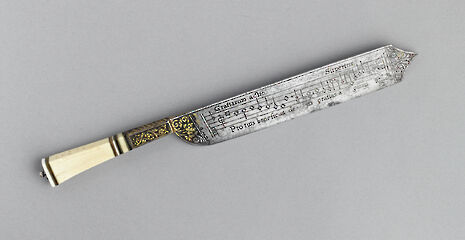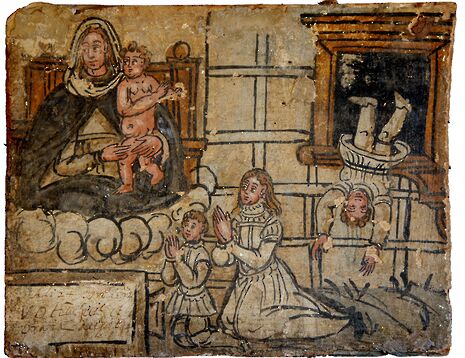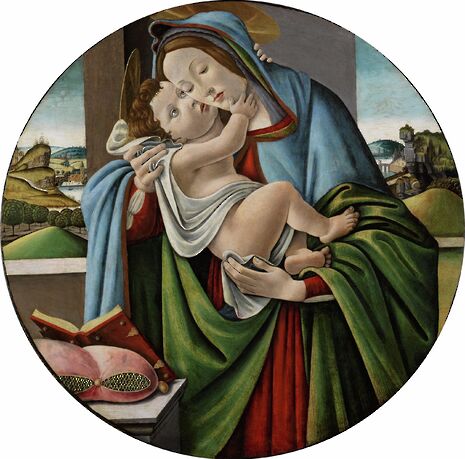Review: Madonnas and Miracles
Charlie Stone reviews the exhibition of Renaissance religious artefacts at the Fitzwilliam Museum

The Fitzwilliam Museum’s new exhibition, Madonnas and Miracles: The holy home in Renaissance Italy, provides a fascinating insight into an often-unappreciated aspect of the Italian Renaissance. While the period is famous for its revival of classical antiquity, humanism, worldliness and even secularism, this exhibition shows that religious devotion still played a fundamental part in the Renaissance home. From paintings, drawings and sculptures to bowls, knives and inkstands, Madonnas and Miracles allows us to appreciate that whether it be high art or an everyday object, Renaissance domesticity goes hand in hand with religious spirituality.
“There is almost a chiaroscuro effect to the exhibition itself”
The focus of the museum’s exhibition is evidently on the private. Even as you walk through the different rooms, each representing a different aspect of Renaissance Christianity, the low-level lighting and small compartments create a sense of homeliness – a homeliness permeated throughout by objects and scenes of religious piety. Indeed, there is almost a chiaroscuro effect to the exhibition itself, with the darkness of the rooms juxtaposed against the bright, colourful artworks.
For it is impossible to deny that every exhibit on show has its own personal, intrinsic value. The 27 ex voto tablets at the end of the exhibition, each depicting a separate scene of religious miracle, would have been extremely cheap panels in the fifteenth and sixteenth centuries, but their imagery is no less meaningful than a masterpiece of Botticelli’s. The inkstand with a scene of the Nativity, from c.1510 and attributed to Giovanni di Nicola di Manzoni dal Colle, loses none of its value in its nature as an everyday, functional object; in fact, that it would be used for a regular activity serves to underline the importance of religion in ordinary life. A great success of the exhibition is to place ‘masterpiece’ next to commonplace object, a gold-leaf portrayal of the Madonna next to a well-worn book of prayer.

Perhaps some of the most interesting objects to examine are the four table knives inscribed with musical notation, probably from sixteenth-century France. Each is engraved with one of four voice parts and a Latin grace and benediction, designed that everyone in the household could sing from the music on their cutlery to give thanks for their food. Helpfully, headphones next to this exhibit play the music on the knives, immersing one in an ordinary yet fascinating ritual in the contemporary home.
“A great success of the exhibition is to place ‘masterpiece’ next to commonplace object”
The masterpieces themselves, too, portray this intermingling of religion and the home. The painting Virgin and Child (c. 1480-90), from the studio of Botticelli, is a perfect example of how normal citizens could purchase paintings associated with the masters to put up in their own home. The round panel lacks the elaborate gold leaf that wealthy patrons would desire, and also some of the complexity of works by Botticelli himself, but is nonetheless a refined and delicate work, affordable for home consumption. Works such as these were aids to the spiritual imagination in the Renaissance home, whether the home be wealthy or poor, and the great variety of these religiously-themed exhibits portray how widely and seriously religion played a part in people’s lives.

Not only does Madonnas and Miracles show us the objects that were present in household, it also gives a sense of people’s personal responses to them. Pieces such as a bible covered in a nun’s annotations, a drawing of two hands, one old and one young, clasped in prayer, and even a folded-up piece of paper with a prayer written on, thought to be worn concealed about the person, underline that religious artefacts were not just for decoration, but there to provoke a response, and play a part in private worship.
It might be interpreted from all this, then, that the exhibition is arguing that in the face of public and learned institutional humanism moving the intellectual focus away from the Christian religion, faith still defined the livelihood of an ordinary person. However, one work shows a slightly different message. This is Domenico Ghirlandaio’s Saint Jerome in his Study, dating from 1480 and given as a photographic reproduction of the original painting in the exhibition. His study portrays how he is a man of letters, a humanist, but the faint halo around his head reminds us that Saint Jerome is primarily a man of faith. The many other portrayals of him in the wild alone with his Bible act as a confirmation of his piety. Humanism, then, was not mutually exclusive from faith in the Renaissance – far from it. The early humanists were not atheistic thinkers, only more focused on classical texts, and what the Fitzwilliam’s exhibition is telling us is that for everyone – the intellectual classes, the richer classes and the poorer classes – religious devotion was universally, intensely significant. In a time of worldliness, religious privacy mattered.
Madonnas and Miracles: the holy home in Renaissance Italy is at the Fitzwilliam Museum until 4th June. Admission free
 News / Fitz students face ‘massive invasion of privacy’ over messy rooms23 April 2024
News / Fitz students face ‘massive invasion of privacy’ over messy rooms23 April 2024 News / Cambridge University disables comments following Passover post backlash 24 April 2024
News / Cambridge University disables comments following Passover post backlash 24 April 2024 Comment / Gown vs town? Local investment plans must remember Cambridge is not just a university24 April 2024
Comment / Gown vs town? Local investment plans must remember Cambridge is not just a university24 April 2024 Comment / Does Lucy Cavendish need a billionaire bailout?22 April 2024
Comment / Does Lucy Cavendish need a billionaire bailout?22 April 2024 Interviews / Gender Agenda on building feminist solidarity in Cambridge24 April 2024
Interviews / Gender Agenda on building feminist solidarity in Cambridge24 April 2024





